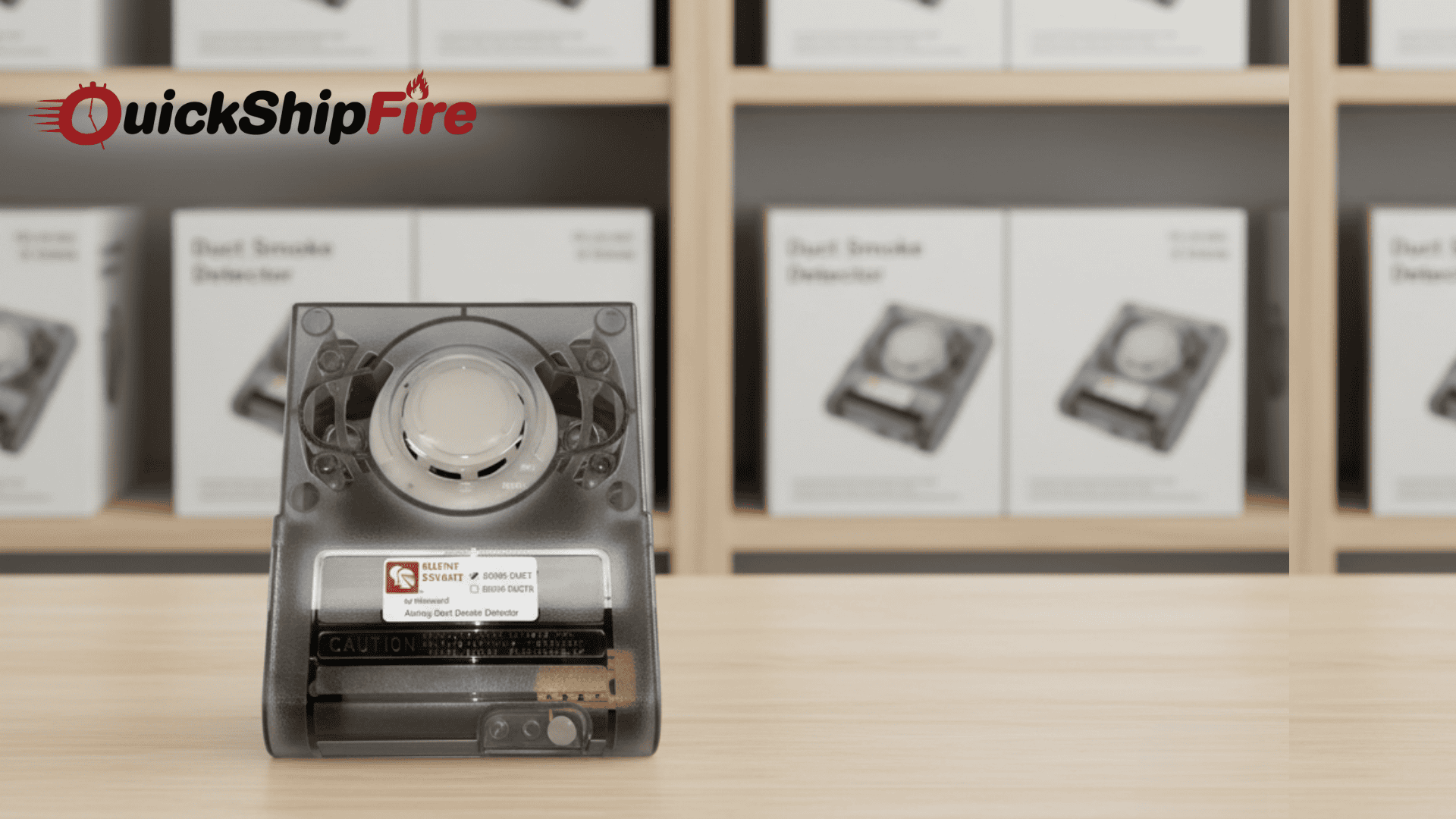Stopping Smoke From Spreading
The main job of Duct Smoke Detector is to find smoke in HVAC ducts. The airflow system can quickly spread smoke to rooms where people may not even know a fire has started if it gets into the ducts. These detectors tell the system to turn off fans or change the direction of the air, which stops the spread.
Warning for People Inside
They also send out early warnings, sometimes even before smoke detectors on walls or ceilings do. People can get out of the way faster if they know about it early.
Code and Compliance
Duct Smoke Detectors are required by many fire codes and insurance policies for big residential and commercial projects. Installing them makes sure that buildings pass inspection and stay up to code.
How Smoke Detectors in Ducts Work
These detectors have sensors that can tell when smoke particles are moving through ducts. The system does something as soon as it sees smoke. This could include:
- Turning off the HVAC fans.
- Setting off alarms that are connected to the fire alarm control panel.
- Sending signals to systems that keep an eye on things.
The design makes sure that smoke cannot spread through the ventilation system without being noticed, even if it does not reach normal room detectors right away.
Important Things to Look For
When choosing Duct Smoke Detectors, contractors and facility managers should look for these main features:
- UL Listing and Code Compliance – Always check that detectors meet safety standards.
- Simple to Keep Up – Units with clear access panels or sampling tubes make it easier to test and clean.
- Compatibility – Make sure they work with the fire alarm system in the building.
- Trusted Brands – Choose detectors from well-known brands that have been used in big projects before.
Best Places to Install
The best places to put Duct Smoke Detectors are:
- On the supply side of air handling units.
- In return air ducts, where smoke is most likely to go.
- In big ducts that go to more than one floor or area.
Do not put them in small ducts or near places with a lot of dust, as this can set off false alarms.
The Human Side of Safety
A lot of contractors and managers say that putting in Duct Smoke Detectors makes them feel better. People feel safer at work, in schools, or in big apartment buildings when they know that a fire will not sneak in through the ventilation system. It is not just about passing the test; it is about saving lives in real life.
Ionization Smoke Detector Link
While we are on the subject of fire safety, it is important to talk about how different devices can work together. For instance, an Ionization Smoke Detector quickly reacts to flaming fires with small particles, while Duct Smoke Detectors stop smoke from spreading through airflow. When both are in the same fire alarm system, they work together to protect you better.
On big projects, contractors often put these devices next to each other. The ionization units protect places like hallways and storage rooms, while the Duct Smoke Detectors protect the HVAC system. They work together to lower the chances of both fast flames and smoke that is not easy to see spreading.
Example from the Real World
Picture a little fire starting in a room where things are stored. If the smoke gets into the ventilation, it could move from one floor to another in a matter of minutes. A ceiling-mounted detector might eventually pick it up, but the Duct Smoke Detector will respond more quickly inside the duct. That gives the system time to stop the smoke, close the dampers, and stop the airflow.
Maintenance Is Still Important
Even the best Duct Smoke Detectors need to be taken care of. Building managers should:
- At least twice a year, test the detectors.
- To keep dust from building up, clean the sampling tubes.
- Check that the fire alarm control panel is getting signals.
If you keep up with maintenance, the system will always be ready to go.
Questions and Answers About Duct Smoke Detectors
Q1. What do Duct Smoke Detectors really do?
They stop smoke from spreading through airflow systems by finding it inside HVAC ducts. This helps keep places far away from the original fire safe.
Q2. Is it against the law to have duct smoke detectors?
Yes, most fire codes say that commercial and multi-unit buildings with HVAC systems that cover large areas must have them.
Q3. What makes duct smoke detectors different from regular smoke detectors?
Duct Smoke Detectors are put inside ducts to stop smoke from spreading through them. Regular detectors check for smoke in open areas.
Q4. How often should they be checked?
At least twice a year, along with cleaning and full system checks to make sure they work right.
Q5. Is it possible for duct smoke detectors to connect to other devices?
Yes, they are usually connected to the fire alarm panel, which means that alarms, fans, and dampers go off right away when smoke is found.
In the End
Duct Smoke Detectors are not optional; they are necessary. They keep buildings up to code with fire safety rules and keep people safe from smoke that is hidden in HVAC systems. The system works better and is more reliable when it is used with other devices, like an Ionization Smoke Detector.
It is not just the law that says contractors, facility managers, or safety officers should buy Duct Smoke Detectors. It is a clear step toward making buildings safer for everyone who lives there.

